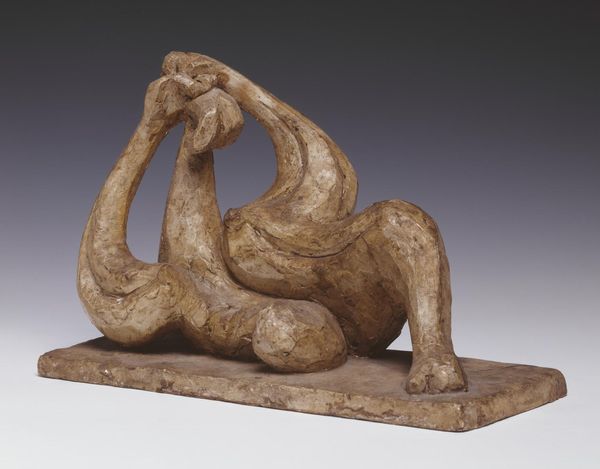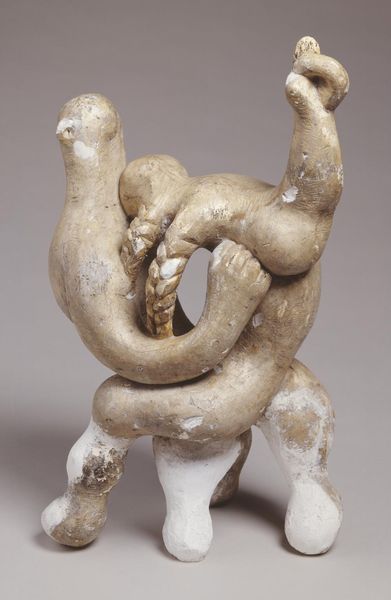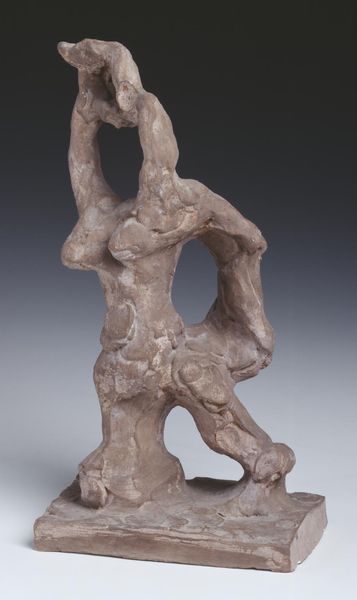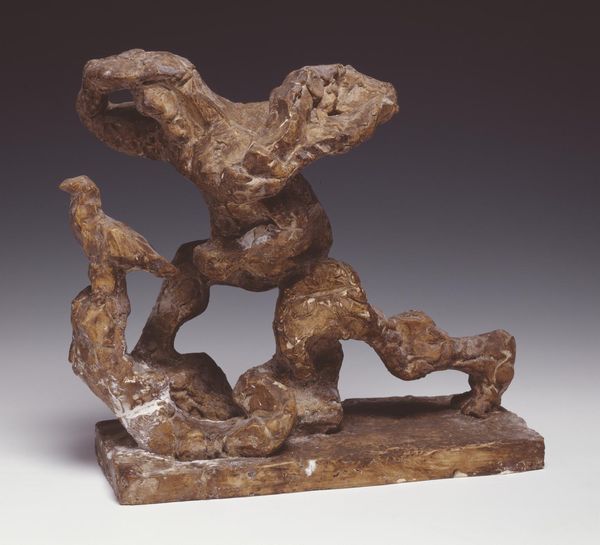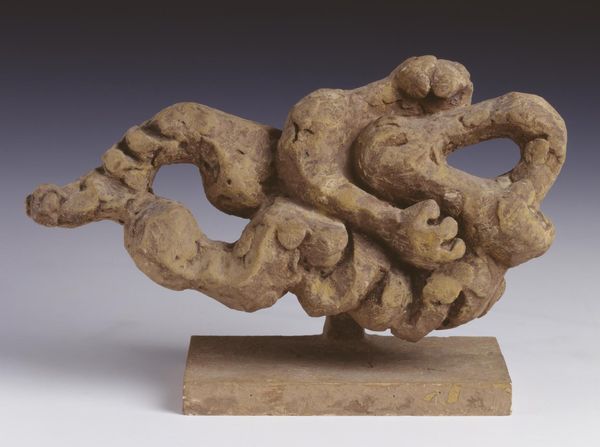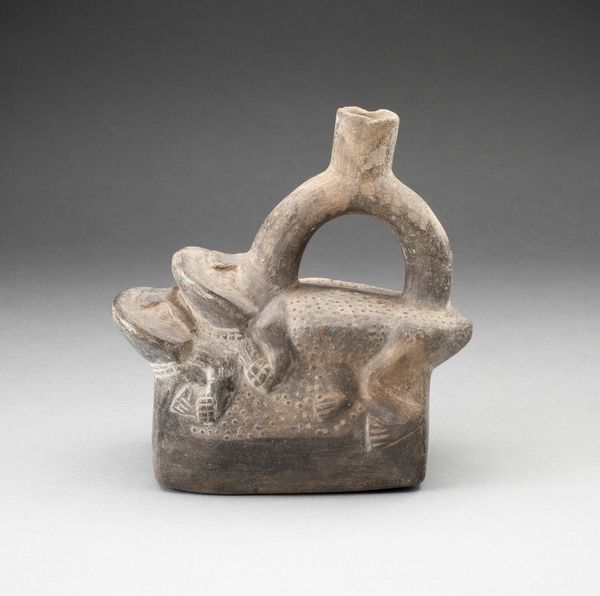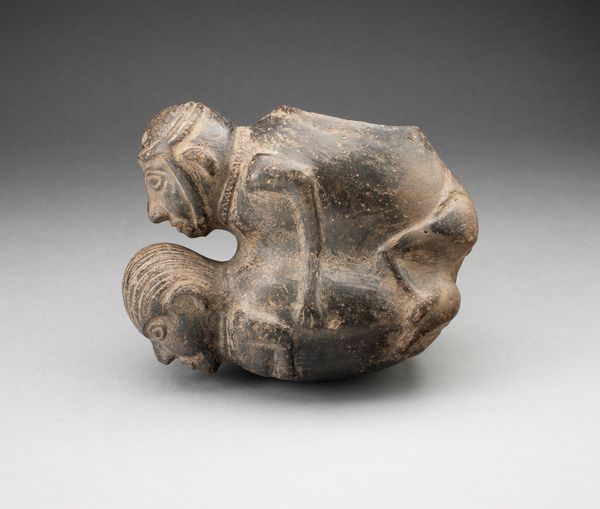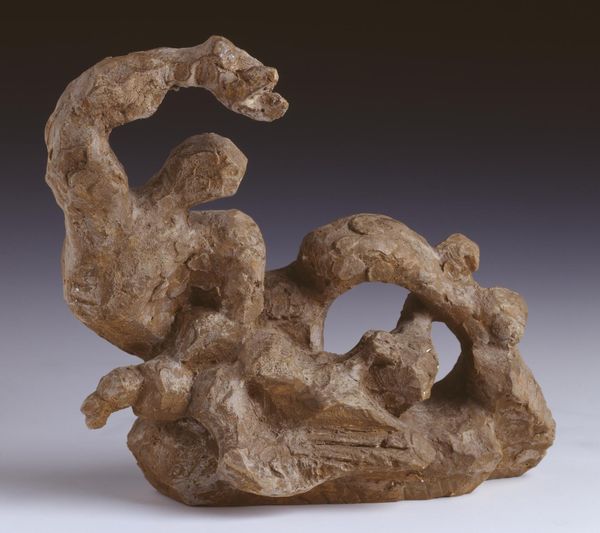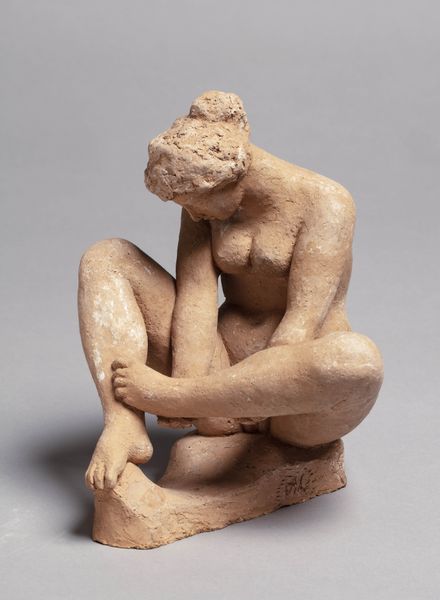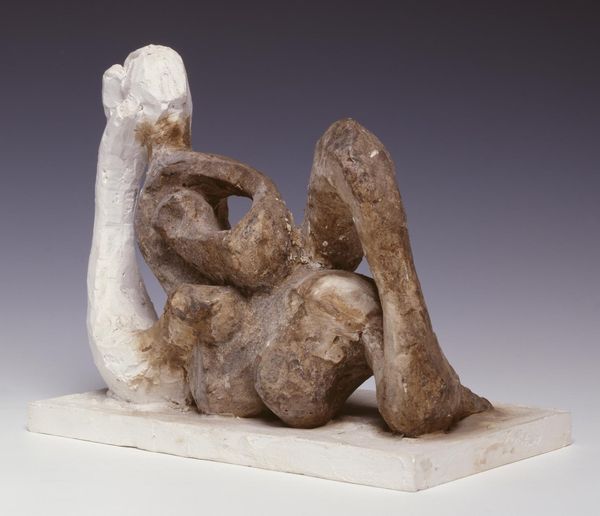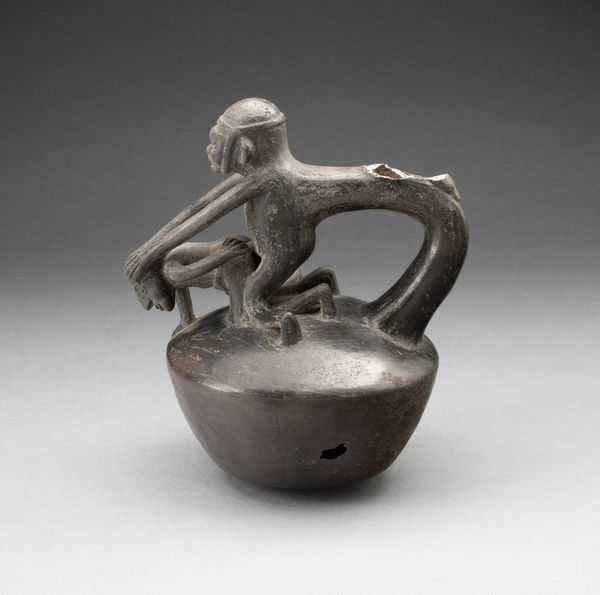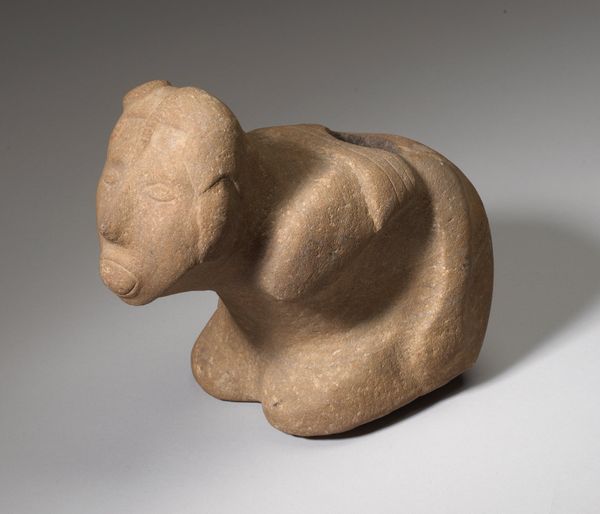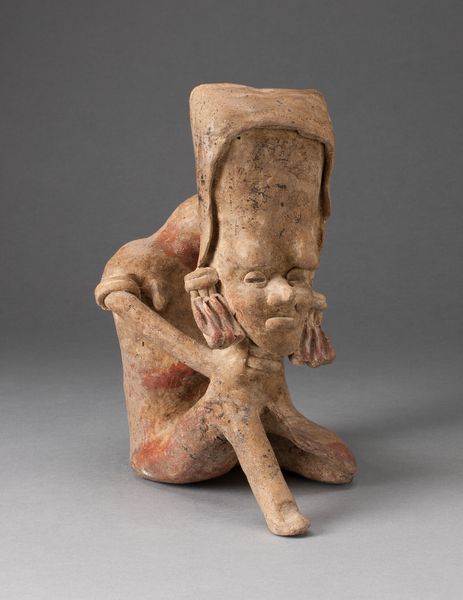
Dimensions: object: 241 x 222 x 203 mm
Copyright: © The estate of Jacques Lipchitz, courtesy, Marlborough Gallery, New York | CC-BY-NC-ND 4.0 DEED, Photo: Tate
Curator: Jacques Lipchitz, born in 1891, created this intriguing sculpture called "Study for Hagar". It's currently held in the Tate Collections. Editor: It immediately strikes me as a figure of anguish. The pose, with the hands covering the eyes, speaks of profound despair, or perhaps, protection. Curator: Hagar, in religious texts, is a figure of exile and hardship. The covering of the eyes certainly reinforces that feeling. It's a common symbol of blindness or unwillingness to face the future. Editor: Absolutely. And the material—the stone itself—adds to the sense of weight, both physically and metaphorically. Consider Hagar's story, a woman cast out into the wilderness, vulnerable. Curator: Lipchitz often drew from biblical narratives, layering them with modern sculptural techniques. The blocky, almost cubist forms still manage to convey immense emotional depth. Editor: Seeing it this way definitely provides a new lens to understand the historical echoes within the sculpture. I'm leaving with a renewed appreciation for the power of symbolism and the human experience. Curator: Agreed. It's a poignant reminder that stories of displacement and resilience resonate through time.
Comments
tate 8 months ago
⋮
http://www.tate.org.uk/art/artworks/lipchitz-study-for-hagar-t03534
Join the conversation
Join millions of artists and users on Artera today and experience the ultimate creative platform.
tate 8 months ago
⋮
According to the Bible, Hagar was the mistress of Abraham and bore him a son who became the ancestor of the Arabs. Mother and son were sent into exile by Abraham's wife Sarah, the mother of the ancestor of the Jews. In choosing to work on this theme in 1948, the year in which Israel was established as an independent state, Lipchitz seems to have wanted to appeal in this work for sympathy for the dispossessed Arabs. In his autobiography Lipchitz wrote that 'the Jews and the Arabs ... should live together as brothers, which they were able to do for many centuries'. The 'Hagar' theme expressed, he said, 'tragedy and suffering with tenderness and hope for the future'. Gallery label, March 1998
